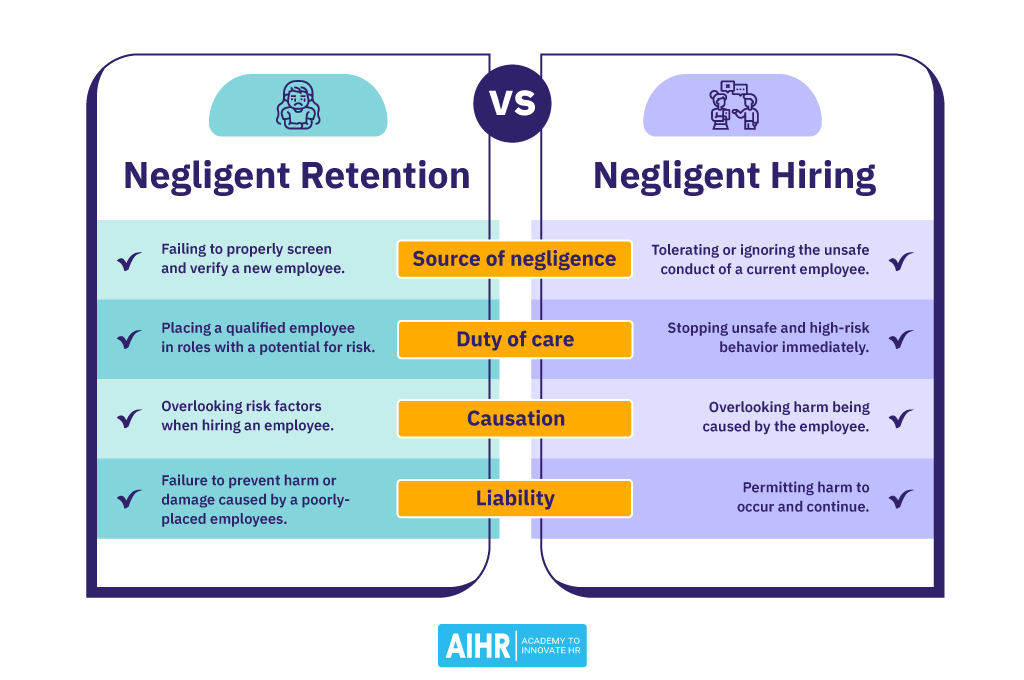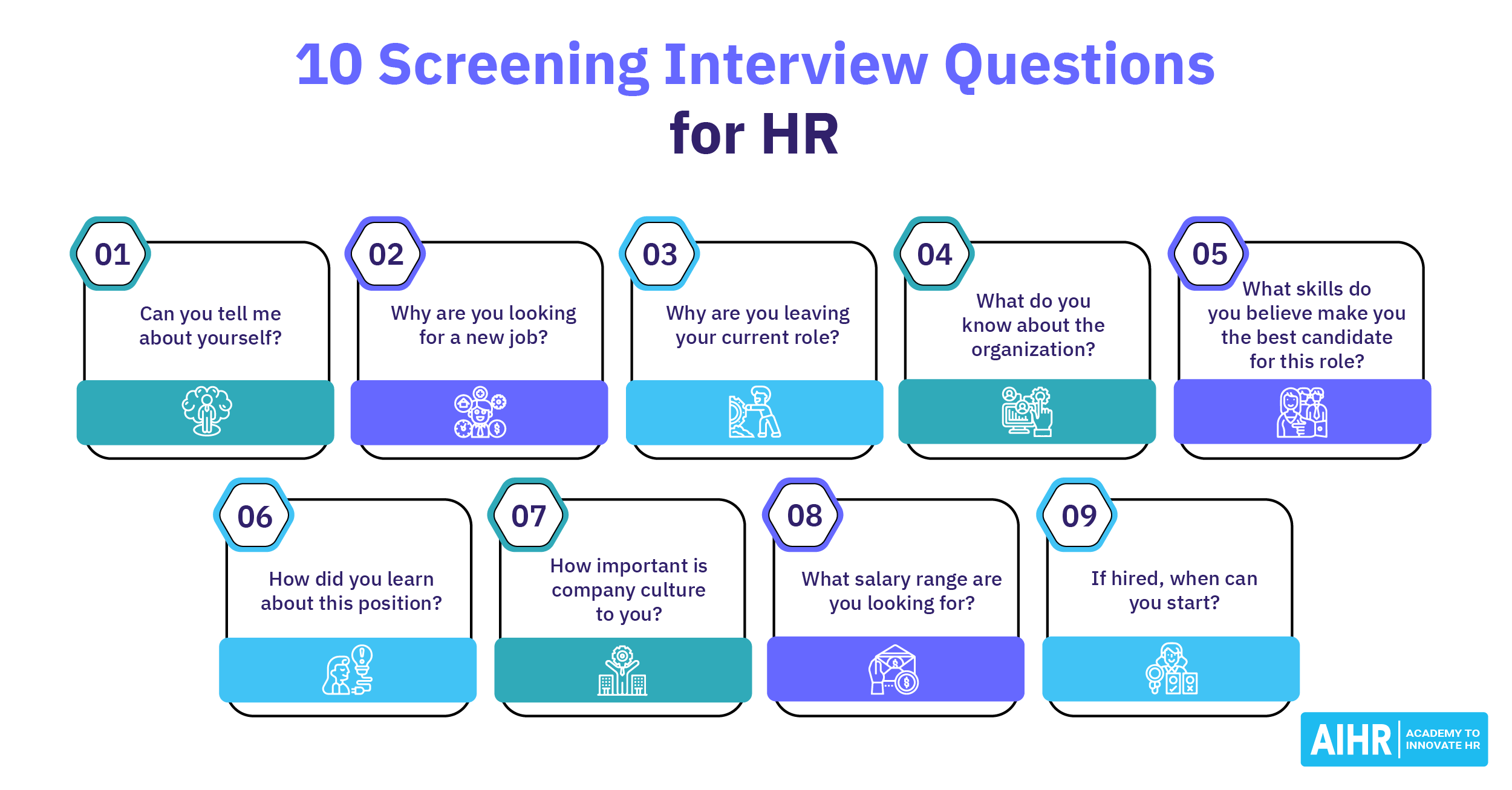Negligent Hiring
What is negligent hiring?
Negligent hiring occurs when an employee is hired who is not suitable to safely fulfill their role. The employer becomes liable for harm caused by the employee if that harm could have been avoided through attentive hiring procedures.
An employer has a duty of care to ensure that each job they fill is performed by someone who can do the job safely. The risk of negligent hiring is why employers usually conduct thorough background checks, including criminal records, before hiring. This is meant to ensure that people who have committed financial crimes are not put in charge of money, or those with DUIs are not placed behind the wheel, and so on.
Hiring employees who are unlicensed for their task, such as unlicensed roofers or electricians, may also constitute negligent hiring. An employer can be charged with negligent hiring in civil court if they fail to detect and prevent avoidable harm due to a lack of pre-employment screening or knowingly place an at-risk employee in a potentially harmful role.
What are the elements of negligent hiring?
- Duty of care: An employer has a duty of care to ensure that each job is performed safely by a qualified individual. They are responsible for ensuring that people with a high degree of risk are not placed in tempting or dangerous positions and that licensed roles are only performed by licensed professionals.
- Breach of duty: An employer is guilty of a breach of duty if they do not take proper steps to ensure that employees hired are qualified and safe to perform the jobs they are placed in.
- Causation: Causation determines the root cause of an incident. For example, a car accident may be caused by an equipment failure or unsafe driving. The causation of an equipment-based accident cannot be negligent hiring, but hiring an irresponsible driver could.
- Foreseeability: To be held liable for negligent hiring, an employer must have been able to foresee the risk.
- Injury or damage: Negligent hiring is usually charged when injury or damage occurs as a result of incautious hiring decisions
- Nepotism: One of the most common causes of negligent hiring is hiring friends and family without responsible screening procedures.
Negligent hiring vs. negligent retention
Negligent hiring and negligent retention are both legal concepts that pertain to an employer’s responsibility to ensure the safety and wellbeing of its employees and the public. They share a common foundation in the principle that employers must exercise due diligence in their employment practices.

Let’s take a look at the concepts in more detail.
Source of negligence
Failing to properly screen and verify a new employee, their history and qualifications
Tolerating or ignoring the unsafe conduct of a current employee
Inaction in the face of known risks
Duty of care
Placing a qualified employee in roles with a potential for risk
Verifying credentials and assessing the individual’s compatibility with the job’s responsibilities
Stopping unsafe and high-risk behavior immediately
Actively monitoring employee behavior and performance to meet the standards of conduct and competence required for their roles
Causation
Overlooking or disregarding risk factors when hiring an employee
Overlooking harm being caused by the employee
Failing to address harmful behaviors or actions
Liability
Failure to prevent harm or damage caused by a poorly-placed employee
Permitting harm to occur and continue
Failing to remove a high-risk employee from a position where they can cause harm
Failure to respond to reports or requests regarding ongoing harm
Negligent hiring examples
- Violent behavior in past employment: An employer fails to conduct a background check on a new security guard who was previously terminated for excessive force. If the employee then assaults someone while on duty, the employer could be liable for negligent hiring by failing to detect the risk of harm.
- DUI record: A logistics employer hires a new driver but fails to check their recent criminal record, which includes multiple DUI charges. The driver is involved in an accident while intoxicated on the job, causing injuries and property damage. The employer may be liable for negligent hiring for employing a drunk driver in a driving position.
- Missing trades license: A construction company hires an electrician with a fraudulent license and fails to check their license number. The worker then installs unsafe wiring, which causes a house fire. The employer is liable for allowing an unlicensed electrician into a position where they can do harm.
- Professional misrepresentation: In another instance, an organization hires an IT professional who misrepresented their experience and qualifications. The employee, lacking the necessary skills, causes significant data breaches that result in financial losses and legal ramifications for the company.
How HR can avoid negligent hiring
- Conduct thorough background checks: Work with a reputable background check service to check criminal, credit, and work histories.
- Implement comprehensive screening processes: Design a custom and comprehensive screening process for every role, with specific risks in mind.
- Verify references diligently: Check work references to confirm that employees have a good performance history that is not fabricated.
- Verify licenses and certifications: Check the numbers on licenses and certifications to ensure they are valid and issued to the right person.
- Foster a safe reporting environment: Ensure employees feel safe reporting unsafe conditions and behaviors.
- Perform skill tests before hiring: Directly test candidates’ skills to ensure they can perform the role.
- Increase screening standards for high-risk roles: Screen with extreme care for high-risk roles involving homes, finances, food, and at-risk populations such as children, the sick, and the elderly.
The Provincial Health Services Authority and the B.C. College of Nurses and Midwives is facing multiple negligent hiring lawsuits for failing to properly vet new staff members and oversee staff in the safe performance of their duties. This ongoing negligence allowed an individual with fraudulent credentials to be employed as a medical staff member.
The employee was involved in various critical healthcare roles in a major hospital. Their false credentials led to untrained care, which caused patients psychological distress and health risks.
This negligent hiring case exemplifies the serious consequences that can arise from inattentive hiring methods, illustrating how important thorough credential verification must be when hiring healthcare staff.







